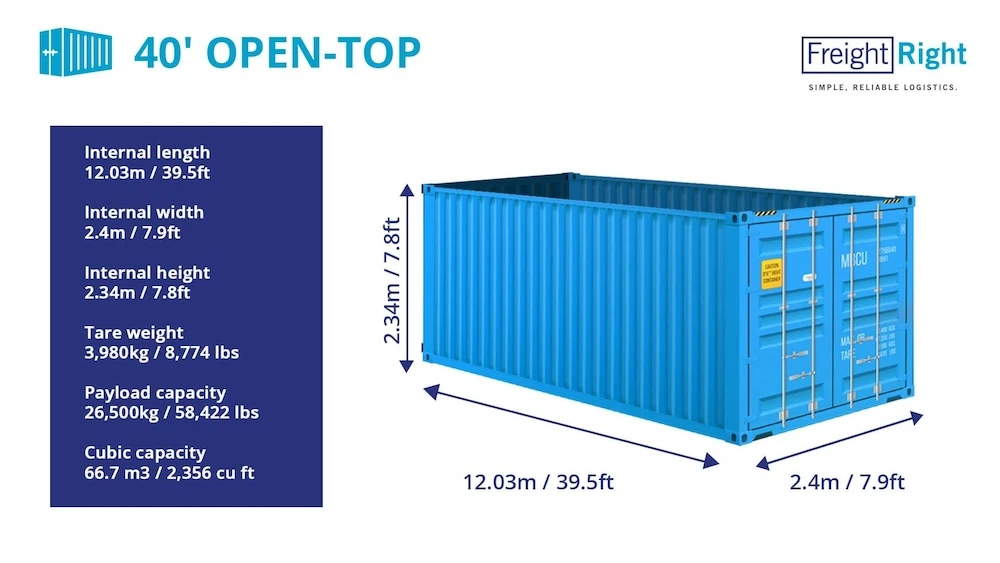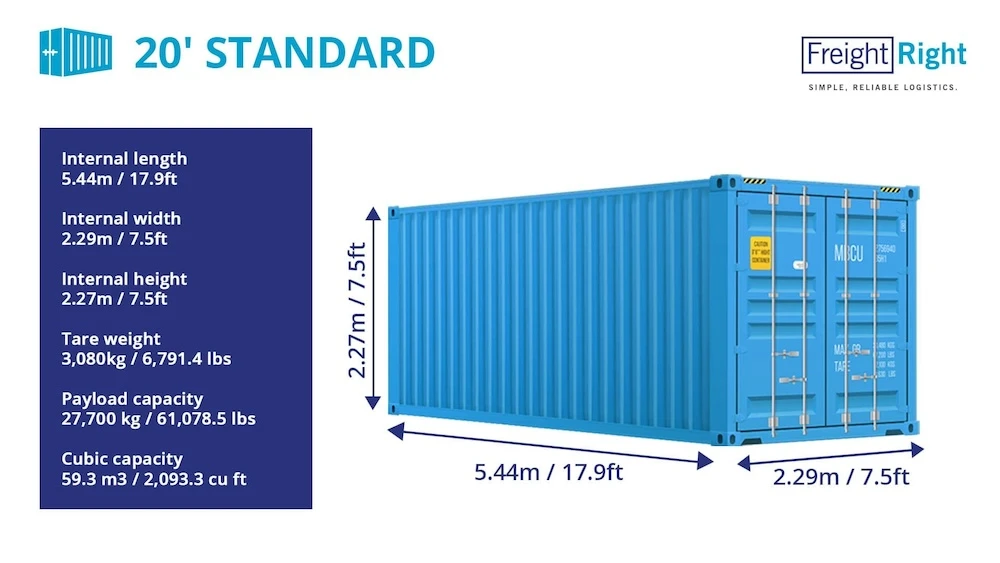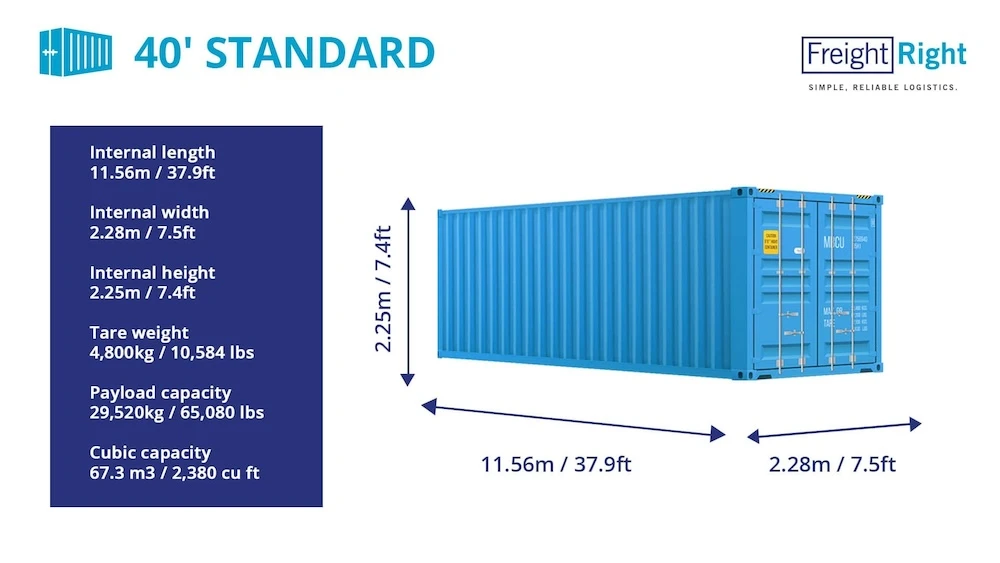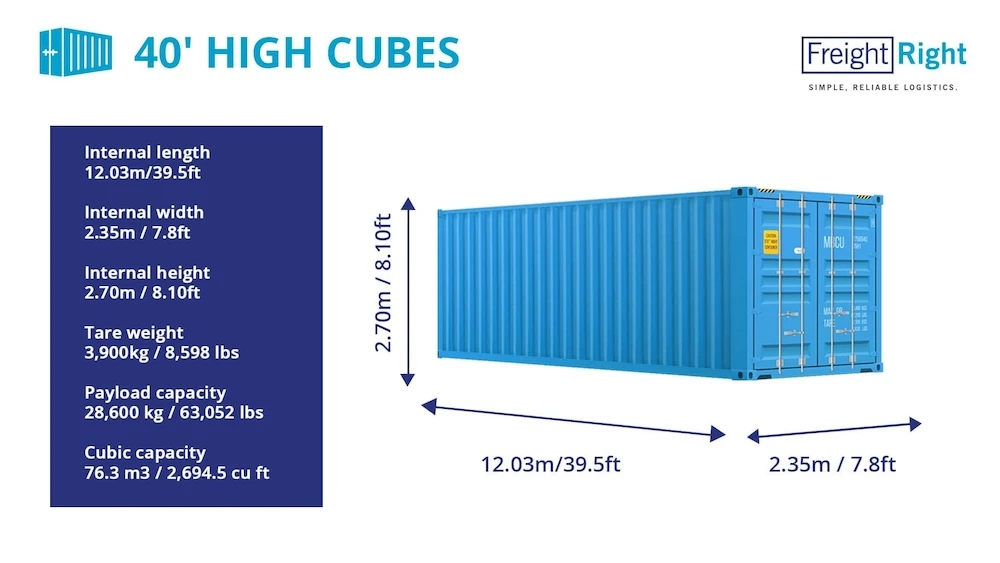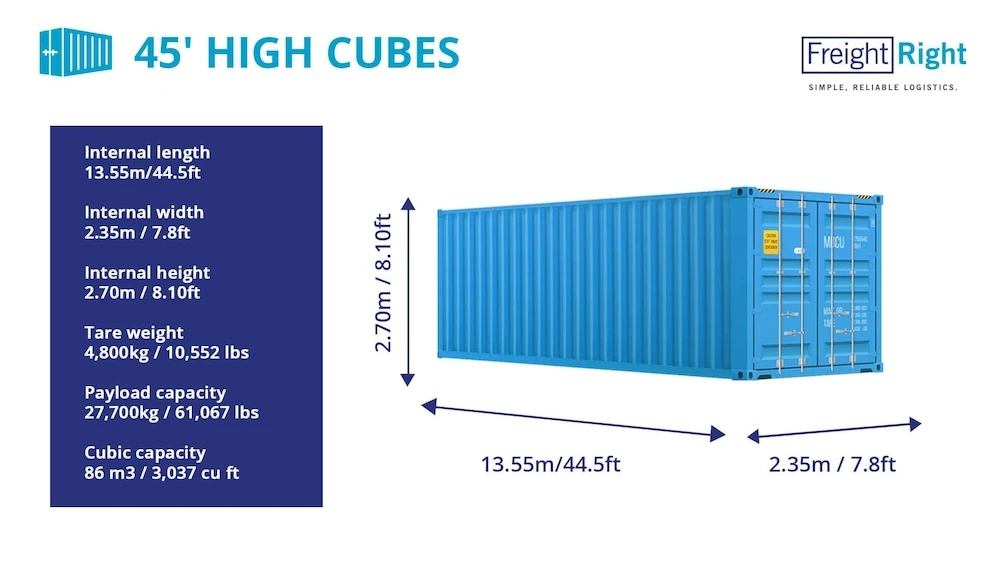40’ and 20’ Standard
The most common type of container on the market, the 20’ and 40’ standard containers are usually made of steel and sometimes aluminum. Aluminum usually has a higher payload. These containers have doors on one end through which cargo can be inserted.
Standard containers are airtight and water-resistant, thus, preventing damage from the outside As the most basic kind of container, they are not very expensive, ranging from $2,000-$4,500 depending on whether you buy new or used. This type of container can carry most types of dry cargo, including boxes, pallets, sacks, barrels, etc. Standard containers can also be customized inside in order to accommodate particular kinds of goods. For example, for retail deliveries, hangers can be placed inside the container to directly transport clothes.
45’ and 40’ High Cubes
High cubes, or HC, refers to containers that are very similar to normal containers, however, their height is increased. They are the same width as standard containers, but the extra foot of height allows shippers to transport bulky goods that require slightly larger maximum capacity.
40’ Open Top Container Dimensions
Open top containers feature a removable top, typically covered by a tarpaulin sheet, allowing flexibility for either covered or uncovered cargo configurations.
The container itself is made of steel, but boasts wood flooring and swinging door heads. Open-top is the container of choice for cargo that is too large for a regular shipping container. This includes machinery and heavy materials that have to be stored upright. Those items can be placed in the container via crane and be lashed into place via lash rings. Pricing for shippers needing these containers can vary. If the cargo is in “gauge,” that is if the height of the cargo sits beneath the roof level then it will be cheaper. However, if the cargo is not in gauge the container cannot be stacked and the shipment will therefore be very expensive to make up for the wasted space.
